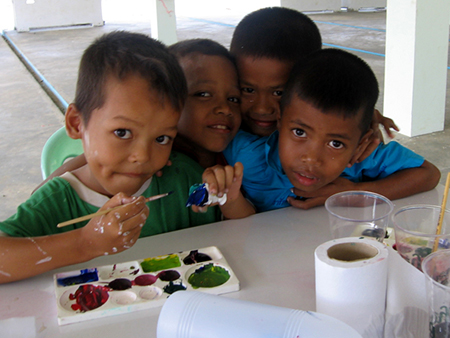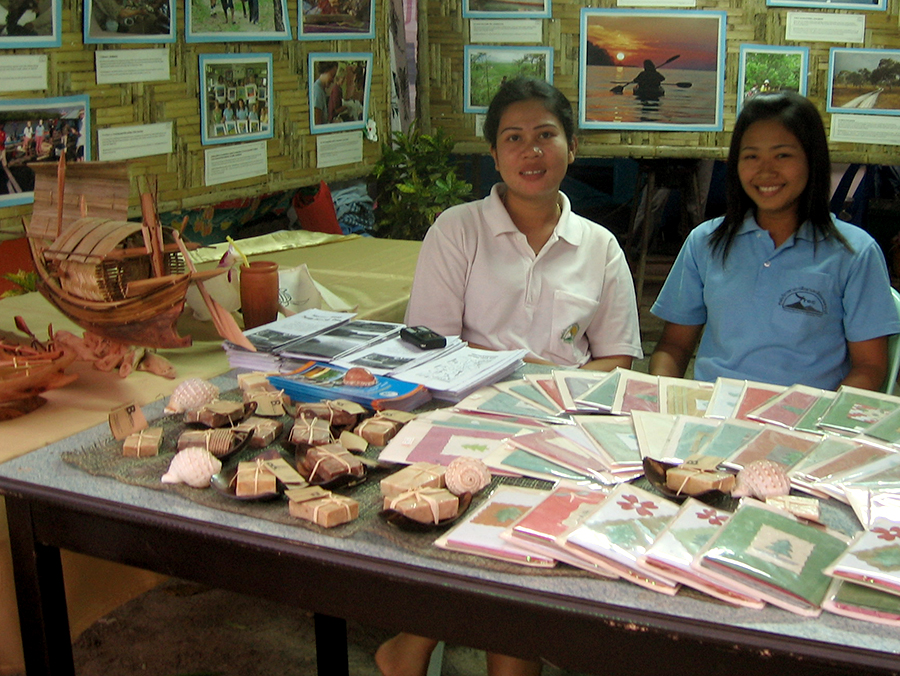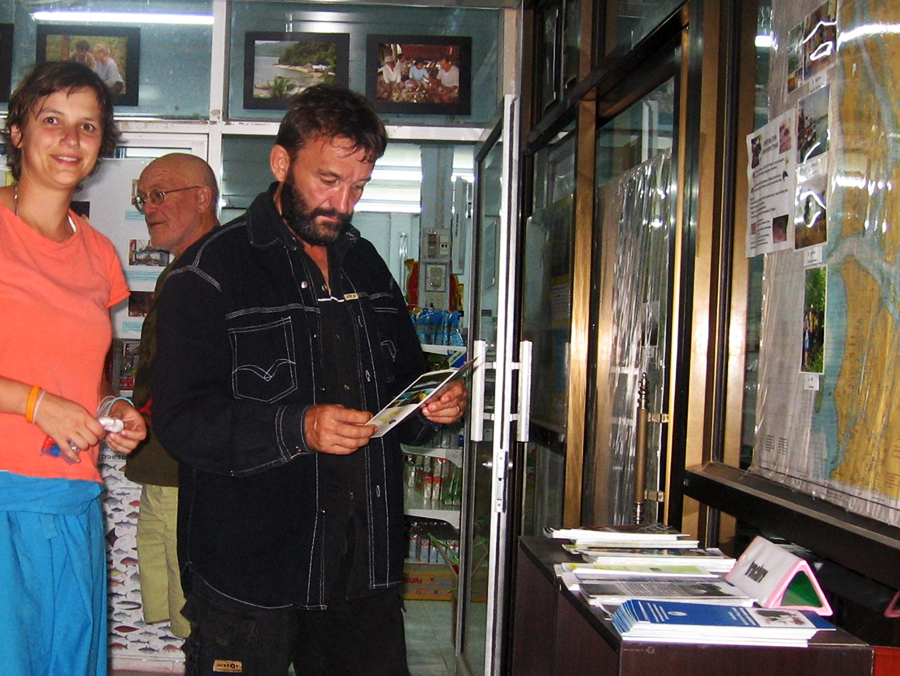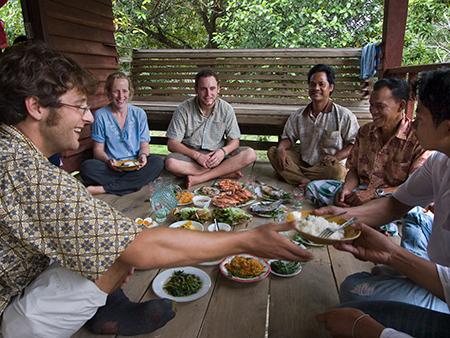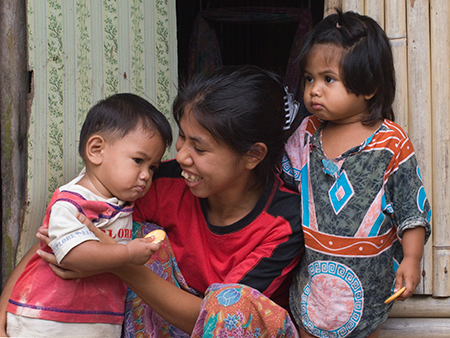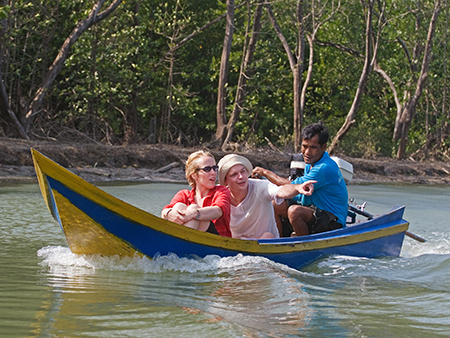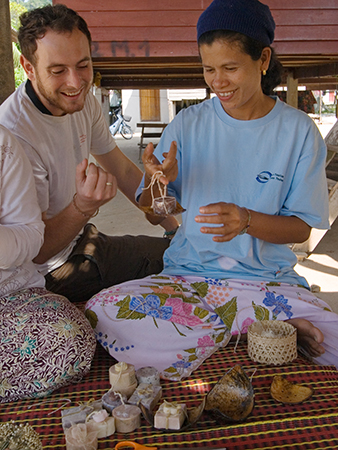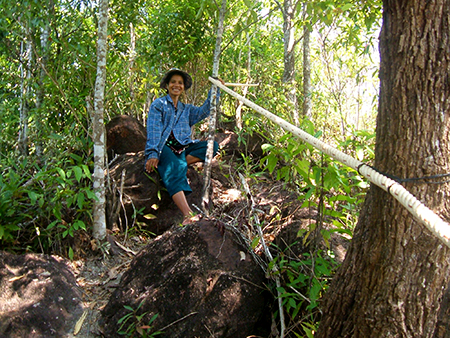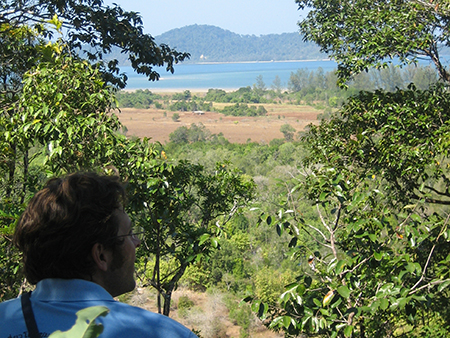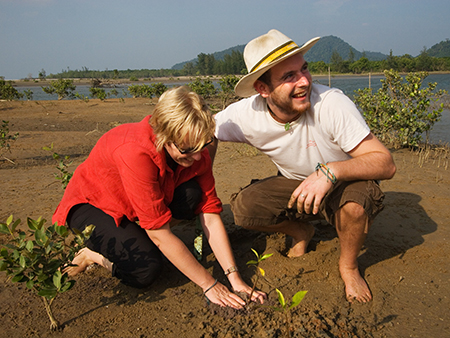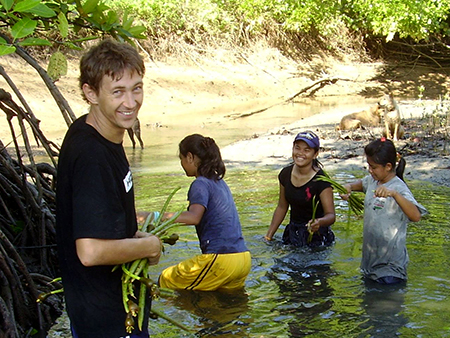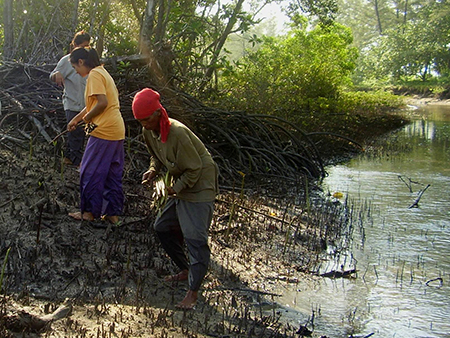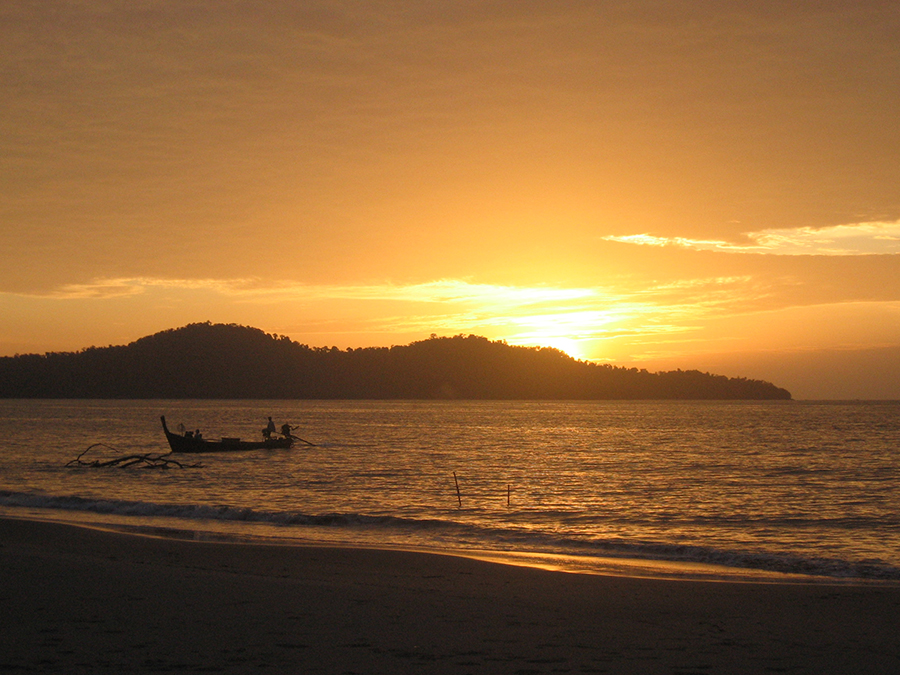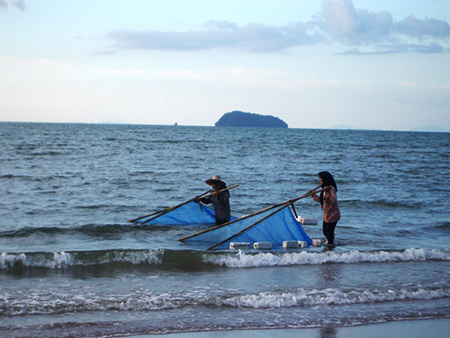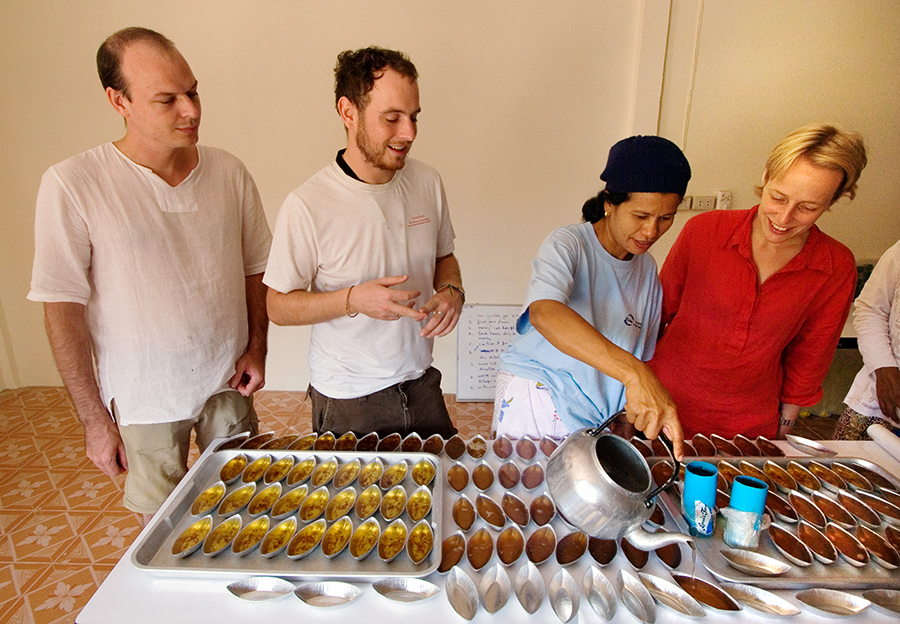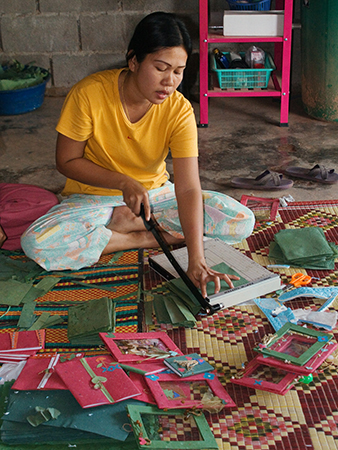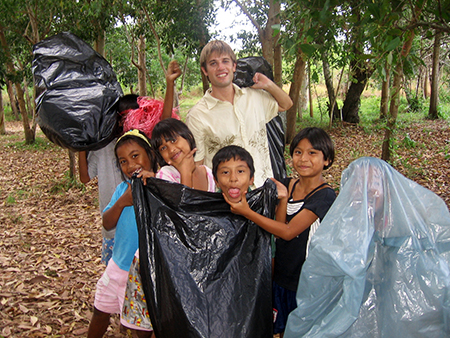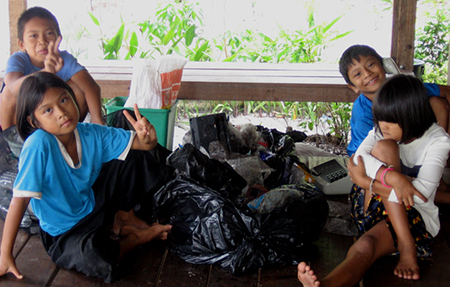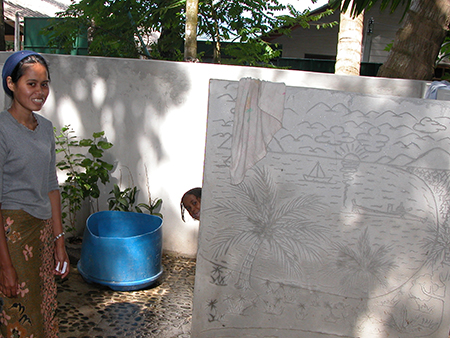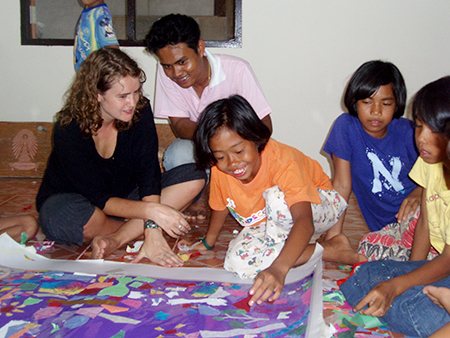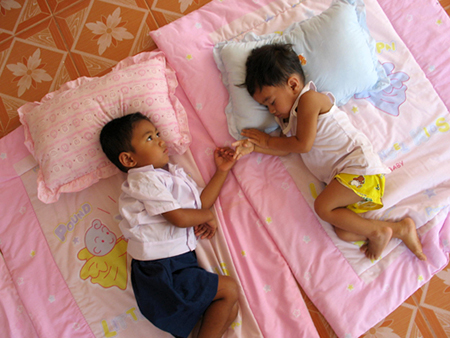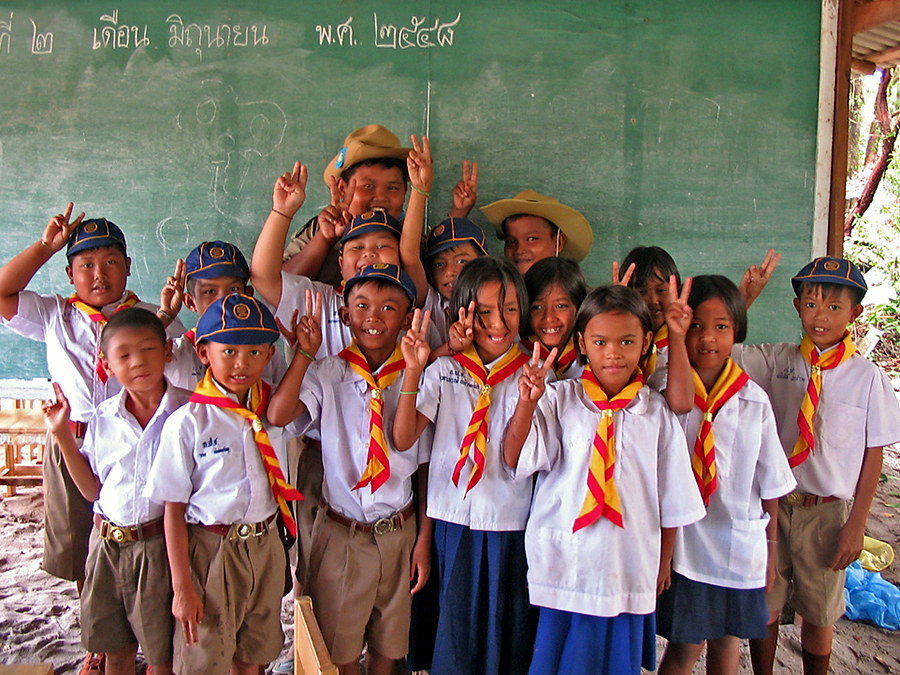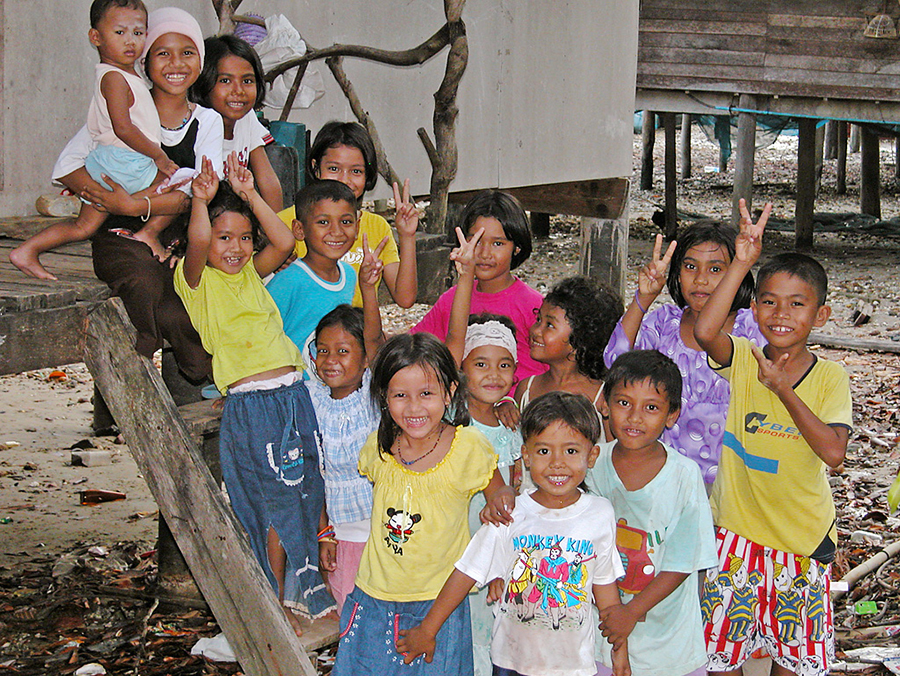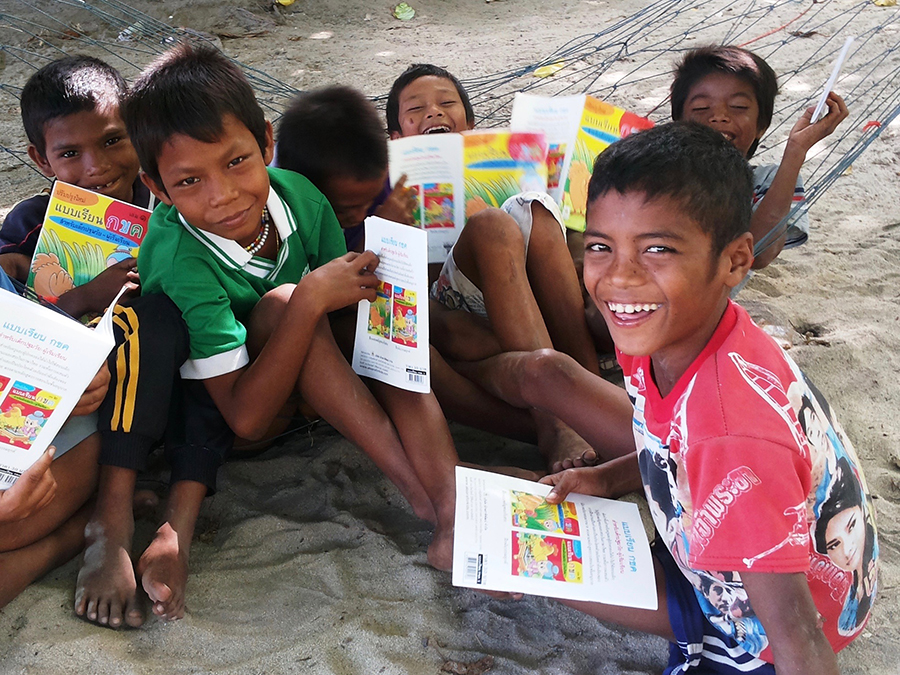Long-Term Projects
NATR operated the following projects as part of our ongoing long-term commitment to the tsunami-affected people of the Koh Phratong region. Click on the links below to jump to the various projects.
- Kuraburi Information Center
- Vocational Training
- Community Conservation
- Handicrafts
- Waste Management
- Ban Talae Nok Community Center
- Long Term Scholarships
- Tung Nang Dam Pier
Kuraburi Information Center (KIC)
To assist communities in creating a well connected and informed network in the region, NATR opened the Kuraburi Information Centre. Conveniently located in the centre of town, the centre was a focal point for information sharing between locals, communities, businesses, and visitors to the area.
Connecting people: The centre had information about the variety of community activities that are happening in the region to help locals keep informed and up-to-date, including activities sponsored by NATR. There was an information board that people and organizations could use to display information that they thought was relevant to the people of Kuraburi and the surrounding region. The KIC staff also organized activities once a month for children in the area. Such activities have included a card-making day where children learned to design their own Valentine’s cards in February and a plaster doll making activity in March. These activities were met with great enthusiasm and created a chance for the youth of Kuraburi and the surrounding area to get to know each other and get involved, as well as to let their parents learn about KIC and how it could benefit them.
Welcoming visitors and tourists: Visitors to the centre saw colorful displays, showing the variety of culture and points of interest in and around Kuraburi. The centre gave villagers the opportunity to tell others about their communities and the types of activities on offer. The centre also informed people about the beautiful waterfalls, hikes and nature trails all a short distance away. This information was provided through both a directory of local businesses, allowing tourists to find out what businesses are in the area and how to contact them if they need to, as well as a visitors guide to Kuraburi detailing all the interesting and beautiful spots to visit in the district.
Generating opportunities: The centre allowed local tour operators to offer alternative tourist activities to their clients, not just trips to Surin National Park. Villagers benefited by coordinating with tour operators to encourage tourists to visit their village and participate in a community-based tour. The centre also listed information about accommodation and tour services to help tourists make the most of their time here.
Timeline: December 2006 to June 2007 with possibility of extension for high season 2008.
Vocational Training
Community-Based Tourism (CBT) – Andaman Discoveries
As tourism becomes a more prominent economic force in the area, there is a danger of local communities being unprepared, both in terms of job skills and cultural resilience. Unless action is taken soon, this may lead to rapid community and resource degradation. Communities need to start building a broad-based economy that can successfully encompass increasing tourism levels without becoming over-dependent.
Sustainable Future
By recognizing the economic, social, and environmental value of protecting this unique part of Thailand; villagers, NATR, and partners are building a regional network that will generate a sustainable source of tourism revenue while protecting the region.
Andaman Discoveries was started by NATR to allow visitors to Thailand, as well as Thais from other regions to experience customized community-based tours in traditional villages just off the beaten track in the North Andaman, Southern Thailand.
As part of their post-tsunami recovery, villagers have opened up their homes and lives to allow tourists to experience their fascinating cultures and communities, in an authentic and non-intrusive way.
The aim of the program is to captivate tourists who wish to experience traditional ways of life and contribute to the conservation of this outstanding region, while at the same time assisting the villages of the tsunami devastated coast of Southern Thailand to generate a supplementary income.
Variety of Activities
The CBT program involves a variety of soft adventure, community-based eco-tours, which include the following activities
- Cultural village tours
- Exploring mangroves via long-tail or row boat
- Hiking through virgin jungle
- Snorkeling in crystal-clear waters teeming with marine life
- Visiting tsunami-craft cooperatives (see NATR’s handicrafts section)
- Fishing trips (night option available)
- Learning how to cook Thai food
- Relaxing on deserted palm-fringed beaches
- Learning to speak Thai with villagers
- Volunteering on a community-based project
Community Conservation
Nature Trails – Tung Nang Dam and Ban Talae Nok
NATR sponsored Noi and Cha, ACE Expert graduates from Tung Nang Dam and Ban Talae Nok, respectively, in the construction of nature trails. Tourists and other guests have a chance to explore the forest around the villages while learning about the unique aspects of the jungle, and enjoying breathtaking views that can be seen from the top. In both cases, the projects utilized local labor and knowledge, building a sense of pride within the community. The nature trails also have a conservation value, as they provided an income from the forest that does not involve hunting animals or removing plants.
Noi installed a rope at all the steep spots of the trail so that the trek is not too difficult, inviting less active explorers to join the tour. In order to make the trail accessible in the monsoon season, she also built small bridges over parts of the inland marsh at the bottom of the mountain. In doing so, Noi identified several species of orchids and discovered a couple of new viewpoints. Cha installed signs and information so tourists can learn about the plant and animal life that thrives on the hills. Mindful of the steep slope, villagers also carved steps into the hillside. Both are beautiful, not-too-difficult hikes that add an adventurous aspect to the CBT program.
Mangrove Reforestation Project – Tung Dap
There were about 74 homes in the village of Tung Dap on the island of Koh Phratong, the majority of which were completely destroyed by the tsunami. The destruction not only immediately affected their lives by taking or injuring loved ones, but also left massive amounts of rubble in the wake. Most of the debris was forced into the mangrove forests on the coastlines where it extensively damaged the ecosystem. It is extremely important to replant the area so that the mangrove forest can revive, crab and fish populations can regenerate, and the villagers can regain their livelihood.
However, replanting is not enough. Villagers also identified the need to protect healthy areas of the mangrove forest. They selected areas in which crab fishing will be prohibited during certain times fo the year. These areas will be enclosed by rope, and a volunteer monitoring group has already been set up.
Unlike many mangrove reforestation efforts to date, which have relied heavily on highly paid scientists, the effort in Tung Dap was led by community members. Village elders advised on which areas to set aside for conservation, and which species to plant in different locations, and village youth gathered the seedlings.
This proposal was conceived and designed by Pin, a young woman from Tung Dap community — NATR provided technical assistance and advice on implementation. Phase 1 included working with the school children of Tung Dap to gather seedlings of various species and survey planting areas. As a thank you to the children, NATR sponsored school lunches and snacks during activities. Phase 2 took place during the monsoon, with a crew of workers from the village planting the seedlings.
Timeline: January to June 2007
Tung Nang Dam Public Land Protection (Boundary Path)
The village of Tung Nang Dam is blessed with a pristine eight-kilometer beach front. Sea turtles and the highly endangered dugong are found just off the shore. In addition to the scenic beauty and rare species, the beach area is utilized by villagers for fishing and community-based tourism. In recent years developers have settled the land adjacent to the beach, with plans to build resorts and bungalows.
In Thailand, regulations prohibit construction of any private structures within 12 meters of the high-tide line. Despite this law, it is commonplace for developers to build right up to the shoreline, restricting local access to the land they have always relied on. In order to protect against illegal beachfront development in Tung Nang Dam, the local conservation committee has requested assistance in building a pathway along the legal boundary for development.
Many landowners agreed to the path in principle, but some were against it, and political obstacles remained. The chief reports that some landowners have already put boundary posts in on public land. Actions taken included:
- Forming a committee of villagers and landowners to decide on the details of the project
- Contacting government departments for official support including Forestry, Navigation, Agriculture and Land Reform, and Marine and Coastal Resources.
- Petitioning the district authorities to declare the boundary area as village-controlled land.
There were many relevant stakeholders to contact, and the trail itself will be between four and seven kilometers long. Considering the enormous amount of work involved in the project, NATR agreed to pay a stipend to two women spearheading the effort, and cover the costs of building the trail.
Timeline: February to June 2007
Handicrafts – Income Generating Projects
The handicraft groups are now independent of NATR, a bold and necessary move for their future survival. NATR provided external support with sales and assistance for marketing. Su, a former member of NATR staff, and a tsunami-affected villager from Bak Jok village, managed the Tsunami Crafts endeavour, stretching her sales and marketing knowledge to encompass the boat, soap, and card groups. She moved away from NATR to market and sell on her own.
Su focused on quality control to ensure customers are satisfied with their purchase. As a result, handicrafts saw new and improved eco friendly packaging, and will hopefully experience continued growth. Progress continued in the domestic marketing of soaps, with high-end hotels in Phuket and Koh Samui requesting samples and considering installing sales displays such as the one at the Phuket Holiday Inn.
A spark of enthusiasm is sent through each handicraft group whenever they get an order from within Thailand or abroad!
Timeline: March 2005 to June 2007 and continuing independently
Waste Management – Laem Naew and Tung Dap
Waste problems in the North Andaman Coastal Communities of Thailand are obvious. All types of rubbish litter the village areas and shorelines, which is of particular concern for isolated communities that are not serviced by local Government garbage collection. Some of the garbage in the communities washes in with the tides from other sources. However, much of it comes from the locals themselves.
For isolated communities the main method of rubbish disposal is to make burning piles or throw items to sea in hope they’ll be carried away by the tides. Much of the rubbish disposed of to the sea is washed in again with the next tide or else becomes hazardous to local aquatic life. This is by no means a fault of the communities, but rather a lack of access to knowledge and systems available to villagers for safe, economically viable, and minimal impact waste disposal.
In an effort to improve village sanitation, reduce resource use, and minimize pollution, NATR sponsored a community-led effort to clean up the villages of Laem Naew and Tung Dap. The waste management effort has three goals: to clean up the existing litter in the village (short-term), to create better methods of disposal and separation of waste (mid-term), and to reduce the amount of waste being generated (long-term). Steps for the project included construction of waste and recycling bins, a visit to a waste management facility, in-village training, village clean-up, and a continuing recycling program.
In Laem Naew, Gasom, one of NATR’s ACE Expert graduates, also built a public bathroom. As the villagers do not have running water, they must all use common wells. The only bathing areas in the village were in a public area—often causing discomfort among women and visitors wanting to shower in private.
In Tung Dap, the program focused on involving youth in waste management. Every weekend, local children collected waste dropped on the ground as well as from bins provided throughout the village, then separated and sold the recyclables, leaving the remainder to be burned by village volunteers in a safe location.
Timeline: October 2006 to June 2007 (Tung Dap), and January to June 2007 (Laem Naew)
Ban Talae Nok Community Learning Center
The Community Center in Ban Talae Nok is now central to village life. The center provides myriad services: a meeting space, vocational training, aerobics, community-based tourism, handicraft production, and many more. Additional activities in the center include English lessons, summer camp for kids, and a waste management project.
The Soap Group continues to cook up wonderful-smelling batches of herbal soap. They have used the community center as a production space since it opened, and have opened a small craft shop that also includes batik and other goods made in Ban Talae Nok.
After searching for over a year, NATR found a well qualified manager for the center. Cha, one of NATR’s ACE Experts and a Ban Talae Nok resident, maintains good relations with the other villagers to ensure the programs reflect their needs. Cha has a very clear vision for the center, and is developing it into a community information and education center. This includes night classes for adults to obtain high-school diplomas and a display center for village enterprises, including soap, batik, and community-based tourism.
Cha sprung into action, hosting a community meeting in which the villagers requested training in homestay techniques, and giving a presentation to a room full of government officials and academics. When not busy with her other projects, Cha is also a guide for the community based tourism program, and has supervised the construction of two traditional wooden boats for use in the mangroves.
Timeline: March 2005 to December 2008
Long-Term Scholarships
The goal of this project was to provide financial support for primary and secondary school education for a total of seven years (2005-2011). Our criteria for long-term scholarships included: financial need, tsunami-affected status, motivation of the applicant, academic performance, community service, and the opinion of our village contacts. NATR interviewed all families, almost 300 children, interested in applying for long-term scholarships. 120 students were accepted into the program.
For poor families, the cost of sending their children to school has always been a challenge, and the loss of income as a result of the tsunami has made this an even greater challenge. For many families, their earning capacity was been reduced by half, and some were still without any form of sufficient income. Despite these obstacles, families place a high value in education as a means for opportunity.
NATR staff made sure to keep in touch with our students, and regular monitoring included a mandatory yearly interview with the child and parents. At this meeting, NATR received an update on the child, how they were doing, and details on academic performance and community service. The child also provided a letter for his or her sponsor. NATR then transferred money for children to purchase their uniforms and school supplies for the first semester. After completing the first semester of each year, children were required to send a copy of their grades for the completed term and proof of registration for the second term of the school year. After this was completed, the second semester funds were transferred.
NATR partnered with several organizations in order to guarantee children’s education for a long-term period. We are grateful to these sponsors, as they have agreed to fund a full seven years of education — providing a stable learning atmosphere for the recipients. Sponsors include Annika Linden Foundation, Tanglin Trust, Helen Doron Group, Rotary Club of Koh Samui, Tomas & Thisbe Ander Memorial Fund, Whatever Pte. Ltd., and many others.
Timeline: October 2005 to October 2011


